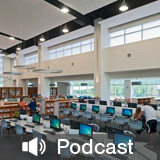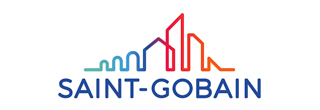
Cementitious Fireproofing: Making a Measurable Difference in Lower GWP
Saint-Gobain designs, manufactures and distributes materials and services for the construction and industrial markets. These solutions are found everywhere in our living places and our daily life: in buildings, transportation, infrastructure and in many industrial applications.
How does cementitious fireproofing contribute to both fire safety and sustainability in modern building design, and what role does it play in achieving LEED v4.1 BD+C certification? This course explores the fundamental principles of cementitious fireproofing, its environmental impact, and its role in sustainable building design. Participants will gain a thorough understanding of how cementitious fireproofing protects buildings and occupants during fires, while also examining its contribution to reducing embodied carbon in LEED v4.1 BD+C projects. We review the use of Environmental Product Declarations (EPDs) and their impact on creating healthier spaces, as well as the product's role in resilient design and long-term sustainability. Additionally, we review sustainable manufacturing practices in cementitious fireproofing production, including the use of renewable energy sources and the effects of different aggregates on global warming potential. By the end of this course, participants will have a comprehensive grasp of cementitious fireproofing's importance in modern construction, its environmental benefits, and its contribution to creating safer, more sustainable buildings.
Buzzsprout: https://www.buzzsprout.com/2207666/episodes/15926302
- Explore the fundamentals of cementitious fireproofing by describing its development, background, and how it protects buildings and occupants during a fire.
- Evaluate the environmental impact of cementitious fireproofing by discussing its role in reducing embodied carbon in LEED v4.1 BD+C projects and analyzing the use of the EC3 tool to assess embodied carbon.
- Review how Environmental Product Declarations (EPDs) for cementitious fireproofing can contribute to LEED v4.1 BD+C projects and create healthier spaces for occupants.
- Describe how cementitious fireproofing supports resilient design for LEED v4.1 BD+C projects and discuss the maintenance requirements and durability of these products to ensure long-term performance and sustainability.
- Discuss sustainable manufacturing practices involved in producing cementitious fireproofing, including the use of renewable energy sources and the impact of different aggregates on the global warming potential (GWP) of these products.





